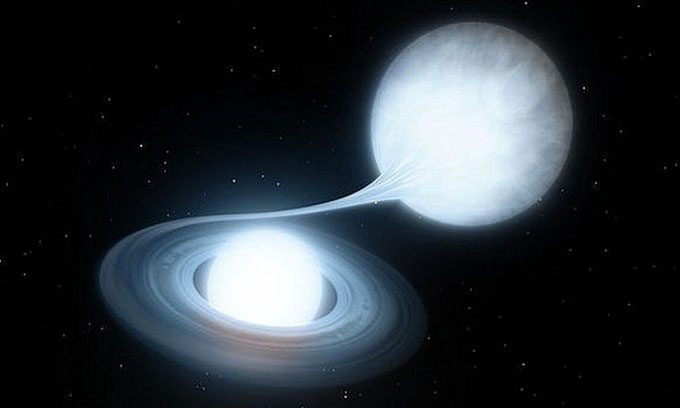The metallic-rich star LP 40−365 was ejected from the Milky Way after a supernova explosion at a speed 1,000 times faster than a bullet.
The unusual celestial object named LP 40−365 is about one-fifth the size of the Sun and is located 2,000 light-years away from Earth. Experts believe this is a rare version of fast-moving stars that remain from a supernova explosion. They are remnants of a giant white dwarf that existed after a massive cosmic explosion. Through research, astronomers at Boston University hope that LP 40−365 will provide insights into other stars with a similar past.

Simulation of the binary star system of LP 40−365. (Image: Caltech).
“The star is moving so fast that it is almost about to leave the galaxy. It travels at a speed of 3.2 million km/h,” said JJ Hermes, an assistant professor of astronomy at the College of Arts and Sciences at Boston University.
Hermes and colleague Odelia Putterman analyzed data from the Hubble Space Telescope and NASA’s Transiting Exoplanet Survey Satellite, which are specialized for surveying the sky and gathering information about the light from stars in space. By examining various types of light data from both telescopes, the research team found that LP 40−365 is not only ejected from the galaxy but also rotates on its trajectory, based on the brightness patterns in the data. Essentially, this star was shot out from the explosion, according to Putterman.
The researchers delved deeper and discovered that the star rotates with a period of 9 hours. Every star rotates, including the Sun, which rotates slowly around its axis over a period of 27 days. However, for the remnants of a star left after a supernova explosion, 9 hours is considered a relatively slow rotation speed. A supernova explosion occurs when a white dwarf becomes too massive to support its own weight. Determining the rotation speed of stars like LP 40−365 after a supernova explosion will provide clues about its binary star system.
Stars in the universe often exist in close pairs, including white dwarfs, a type of extremely dense star formed at the end of a star’s life cycle. If a white dwarf loses too much mass to its companion celestial body, the remaining star may self-destruct, leading to a supernova explosion. Explosions can occur in various ways, but they are very difficult to observe, making it challenging for researchers to identify which star exploded.
Based on the relatively slow rotation speed of LP 40−365, Hermes and Putterman suggest that it is the remnant of a self-destructing star after being stuffed with too much material from its companion star. As the stars orbit each other too closely and too quickly, the explosion causes both stars to be ejected, and currently, only LP 40–365 is observable.
“These are very strange stars,” Hermes remarked. “Stars like LP 40–365 not only belong to the fastest-moving group that astronomers have ever known but are also the most metallic-rich stars ever discovered. A star like the Sun contains helium and hydrogen, but a star that survives a supernova explosion is primarily composed of metals, because what we are observing is the byproduct of the intense nuclear reactions that occur when the star explodes.” The researchers published their findings in the journal Astrophysical Journal Letters.





















































